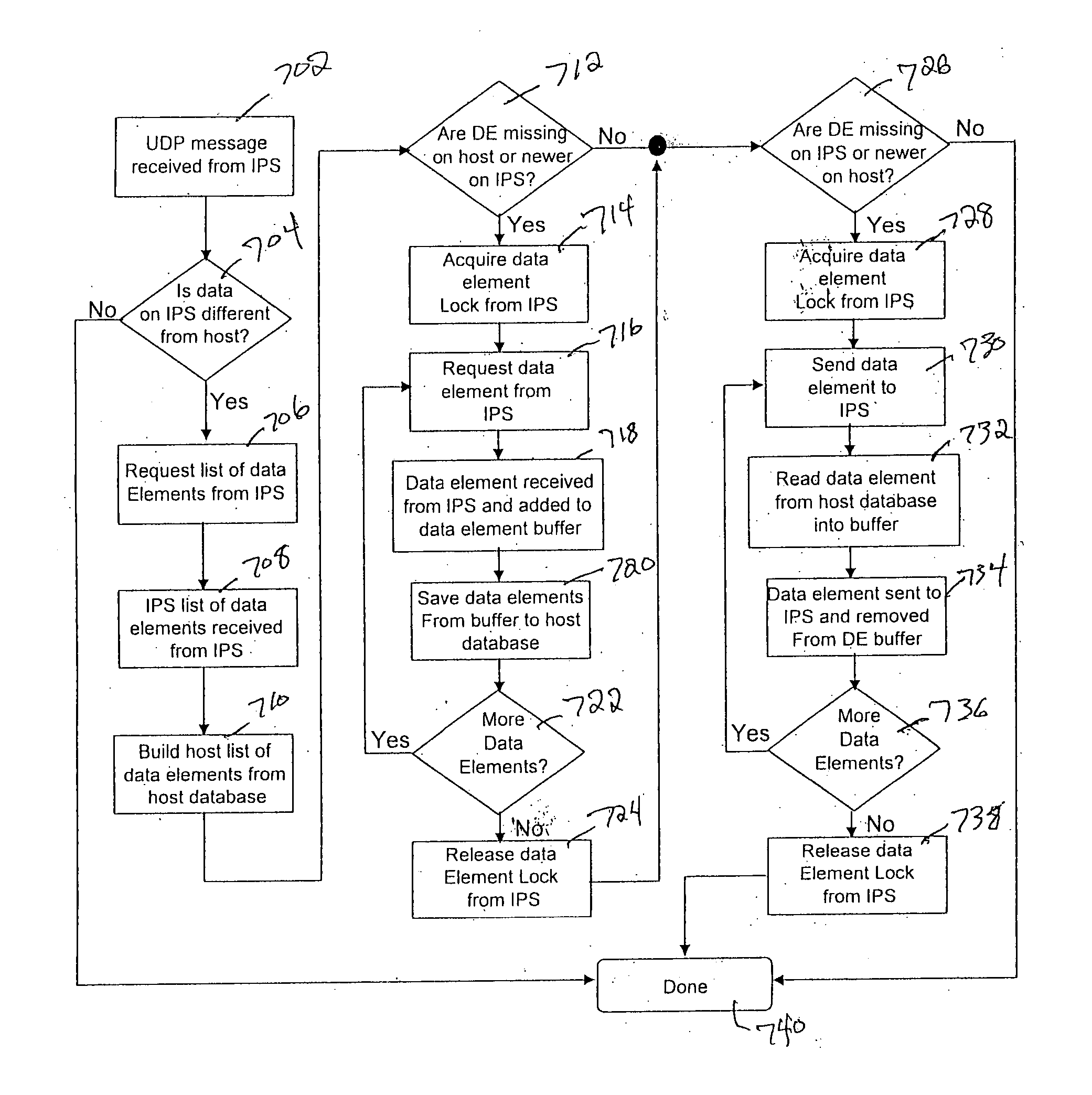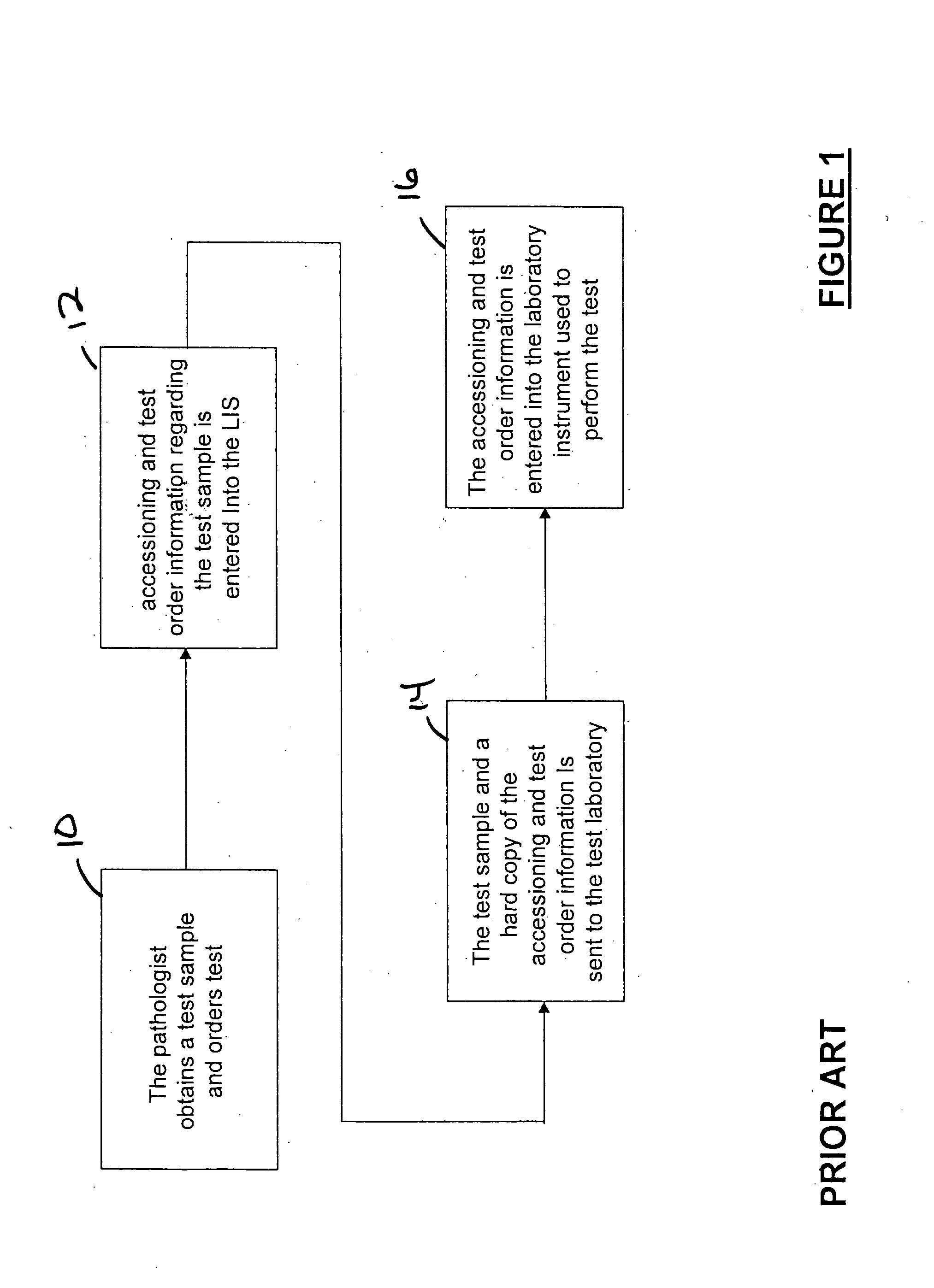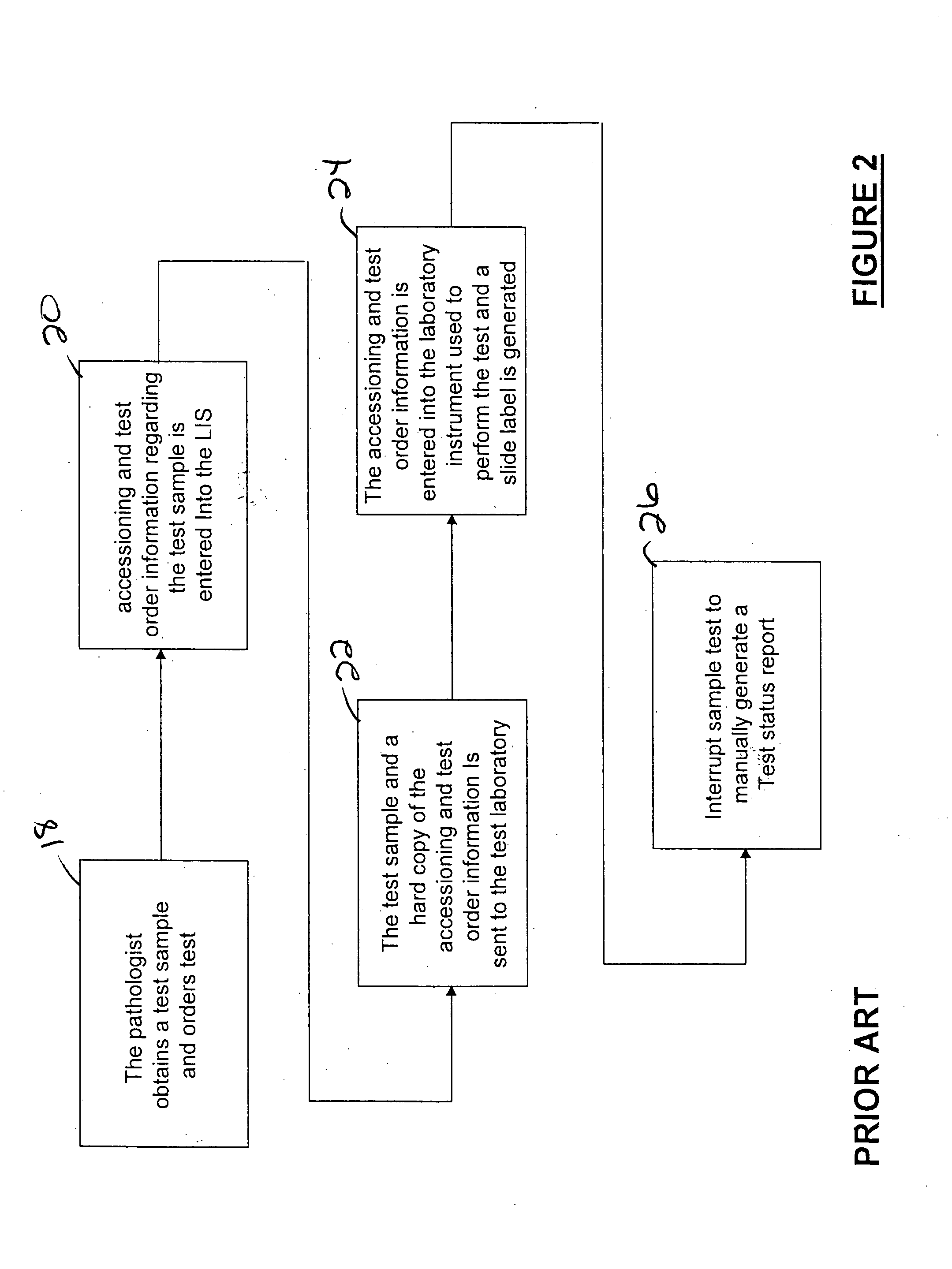Laboratory instrumentation information management and control network
a technology for laboratory instruments and information management, applied in the field of data management, can solve the problems of increasing the amount of time and energy expended in replicating tedious functions, unable to manage workflows of current laboratory information systems, and unable to manage workflows of certain laboratory instruments, etc., to achieve the effect of reducing the burden on each host computer, facilitating the ability to optimize and automate use, and increasing the efficiency and efficacy of laboratory practi
- Summary
- Abstract
- Description
- Claims
- Application Information
AI Technical Summary
Benefits of technology
Problems solved by technology
Method used
Image
Examples
Embodiment Construction
[0027] Referring to FIG. 3, an Interface Point Network (according to an illustrative embodiment of the invention IPN) 100 is provided and includes an Interface Point Server (IPS) 102 in communication with at least one hospital Laboratory Information System (LIS) 104 and a network of host computers 106. The network of host computers 106 includes a first host computer 108 communicated with a first plurality of laboratory instruments 110 and a second host computer 112 in communication with a second plurality of laboratory instruments 114. The host computer(s) may be interconnected with the laboratory instrumentation via known Ethernet connection or by other interconnectivity mechanisms known in the art, such as known serial or parallel connections or wireless connection. IPS 102 includes Interface Software B (referred to herein synonymously as “ISB” or “Ventana Lab Manager” or “VLM” software), that allows for the performance of automatic functions related to the management of data betw...
PUM
 Login to View More
Login to View More Abstract
Description
Claims
Application Information
 Login to View More
Login to View More - R&D
- Intellectual Property
- Life Sciences
- Materials
- Tech Scout
- Unparalleled Data Quality
- Higher Quality Content
- 60% Fewer Hallucinations
Browse by: Latest US Patents, China's latest patents, Technical Efficacy Thesaurus, Application Domain, Technology Topic, Popular Technical Reports.
© 2025 PatSnap. All rights reserved.Legal|Privacy policy|Modern Slavery Act Transparency Statement|Sitemap|About US| Contact US: help@patsnap.com



